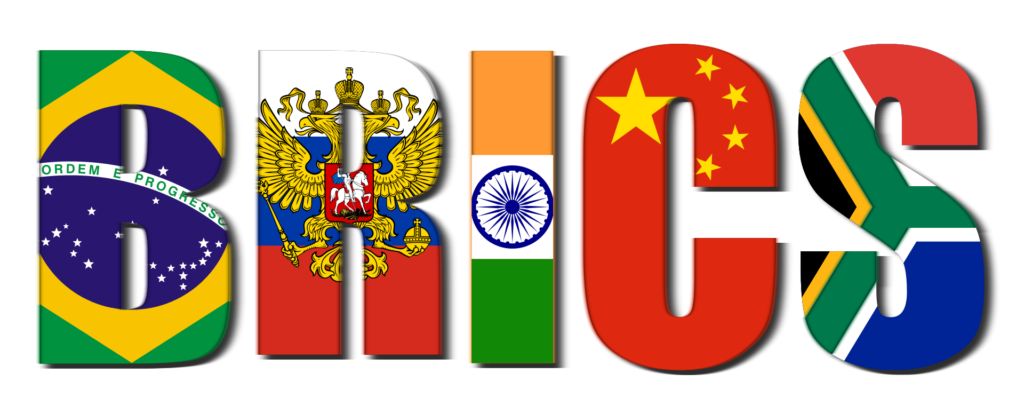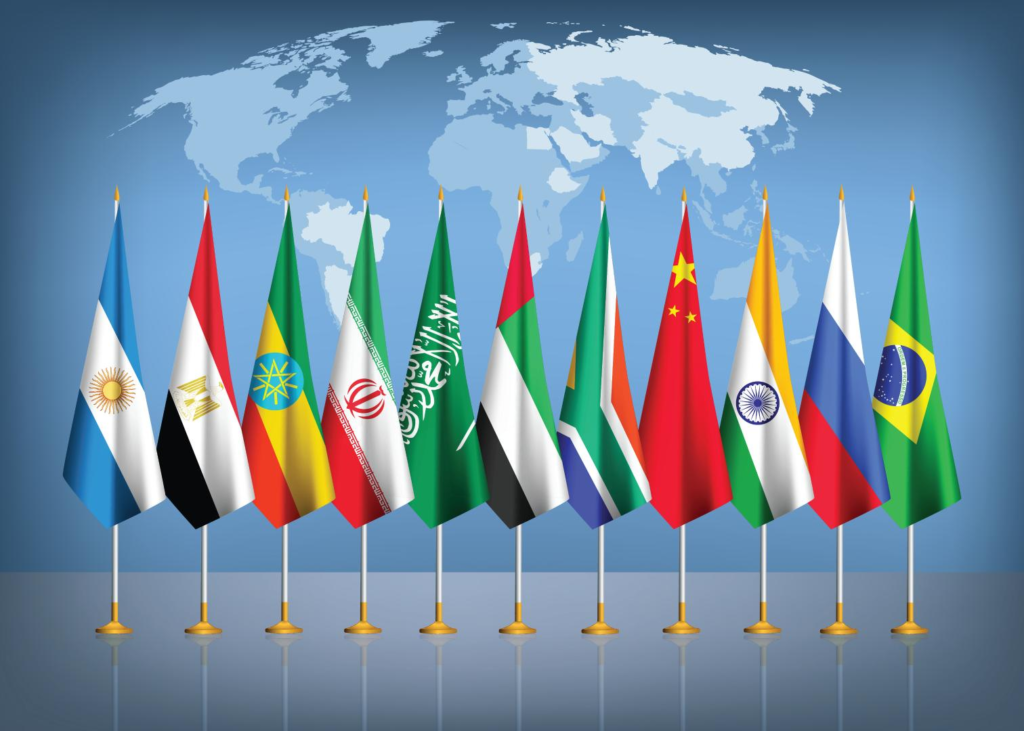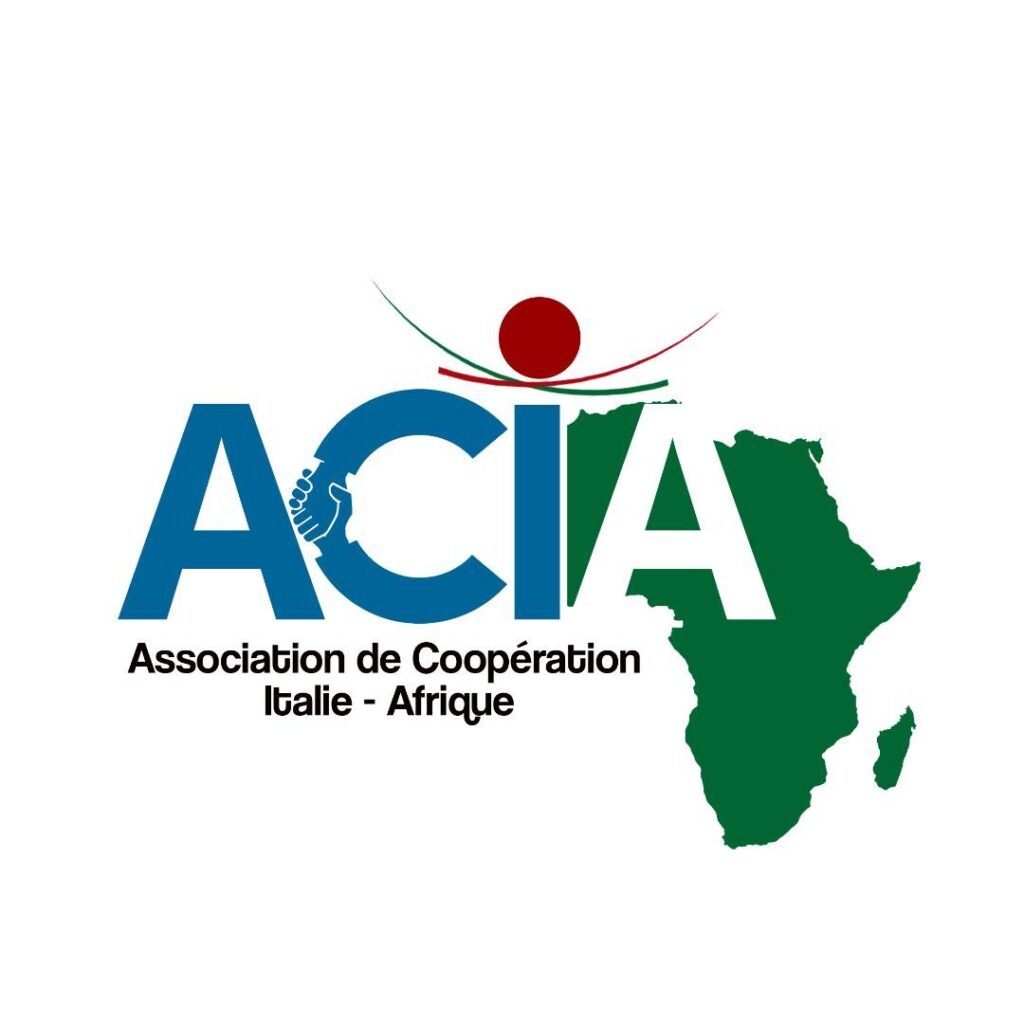The Rise of the BRICS and the Transformation of the Global Order: Towards a Multipolar System?

Over the past two decades, the BRICS group (Brazil, Russia, India, China and South Africa) has emerged as a transformative force in the global economy and geopolitics. With an accelerated expansion in 2023 and ambitious plans to reform the international financial system, the BRICS are presenting themselves as an alternative to Western dominance, challenging the hegemony of the G7 and promoting a more balanced global order. This article analyses the economic, demographic and geopolitical dynamics behind their rise, exploring the implications for the future of international relations.
1. The Historical Context: From Emerging Economies to a Global Blockade
Born in 2001 as an acronym coined by economist Jim O'Neill to identify four emerging economies (BRICs), the BRICS formalised in 2009 with the first summit in Russia, adding South Africa in 2011. The initial objective was to create a forum for economic cooperation, but over time the vision broadened towards a reform of global institutions, from the International Monetary Fund (IMF) to the United Nations, which were deemed too influenced by Western interests.

Key Data:
- In 2000, the BRICs accounted for 18% of global GDP; by 2025, with new members, they could reach 35-40%.
- The New Development Bank (NDB), founded in 2015, has financed over 100 infrastructure projects to the tune of USD 32 billion, reducing dependence on the World Bank.
2. Economic Competition with the G7: Numbers and Strategies
While the G7 (US, Canada, Japan, Germany, France, Italy, UK) still holds the 45% of world GDP, the BRICS are closing the gap with growth rates above 4% per year, compared to 1-2% for advanced economies. China alone contributes 18% to global GDP, surpassing the US in purchasing power parity (PPP).

Critical points:
- Economic Diversification: China focuses on advanced technologies (AI, semiconductors), while Russia and Saudi Arabia control 25% of global oil exports.
- Vulnerability: Brazil and South Africa face political instability and internal inequalities, threatening to hinder the bloc's integration.
3. Demographic Superiority: A Double-edged Resource
With 3.2 billion inhabitants (41% of the world's population), the BRICS boast unparalleled consumption and labour force potential. However, demographic dynamics vary:
- India: With 1.4 billion people and a median age of 28, it is a hub of innovation and cheap labour.
- China: The ageing population (median age of 39) threatens long-term growth.
- Africa: The entry of Egypt and Ethiopia (candidate) could lead to 2.5 billion people on the continent by 2050.

Comparison with the West:
- Europe and North America, with 1.1 billion inhabitants and a median age of 42, face pension crises and declining productivity.
4. The Expansion of 2023: New Members and New Spheres of Influence
In 2023, the BRICS welcomed Saudi Arabia, Iran, the United Arab Emirates, Egypt and Ethiopia, excluding Argentina after the change of government. This map reflects a precise strategy:
- Resource Control: The new members hold 42% of global oil and 35% of natural gas.
- Access to Strategic Corridors: Egypt controls the Suez Canal, while the Emirates is a Middle Eastern financial hub.
- Containment of the West: Iran and Russia seek allies to evade US sanctions.
Criticism: Political heterogeneity (from Gulf monarchies to democracies like South Africa) complicates the decision-making process.
5. The Common Currency Challenge: Utopia or Realism?
During the 2023 summit, the BRICS discussed the idea of a common currency backed by a basket of national currencies and commodities. The aim is to reduce dependence on the dollar, used in the 58% of global reserves and in the 88% of forex transactions. However, the hurdles are enormous:
- Monetary Coordination: Differences in interest rates and inflation between countries make a unified policy difficult.
- Historical Examples: The euro required decades of fiscal integration and sacrifices of sovereignty, an unlikely path for the BRICS.
- Immediate Alternatives: Some countries are already using yuan and rouble in bilateral trade (e.g. Russia-China: 70% in local currencies in 2023).
6. Geopolitics of the BRICS: Neutrality, Multipolarity and Conflict
The war in Ukraine has highlighted global divisions: while the West supports Kiev, Russia and China promote an anti-Hegemonic narrative, gaining support in the Global South. The BRICS present themselves as champions of 'non-interference'attracting countries disillusioned with western unilateralism.
- Cultural Soft Power: China invests in Confucius universities and film co-productions; India exports digital technology (UPI, Aadhaar).
- Hard Power Military: Joint exercises and arms sales (Chinese drones to Saudi Arabia) strengthen ties.
7. Multilateral Collaborations: Beyond the Boundaries of the Blockade
The BRICS do not act in isolation. The forum BRICS+, launched in 2017, involves more than 50 countries in development projects. In addition:
- Africa: South Africa promotes the African Union's Agenda 2063, connecting infrastructure and markets.
- Latin America: Brazil supports the Bolivarian Alliance (ALBA), while China has invested USD 150 billion in the region since 2005.
- Central Asia: The Chinese New Silk Road integrates Kazakhstan and Uzbekistan into the Eurasian trade routes.
8. Internal Challenges: Inequalities, Conflicts and Competition
Despite their successes, the BRICS face internal tensions:
- China-India rivalry: Border clashes in 2020 and competition for influence in the Indian Ocean.
- Dependence on China: The Asian giant accounts for 70% of the bloc's total GDP, raising fears of hegemony.
- Environmental crises: Deforestation in the Amazon and pollution in China threaten sustainable development goals.
9. Future Scenario: What World Order?
By 2030, the BRICS could redefine the rules of the global game through:
- IMF reform: Fairer voting quotas for emerging countries.
- Alternative Payment Systems: Blockchain networks to bypass SWIFT.
- Sectoral Alliances: OPEC+ energy with Russia and Saudi Arabia; technology cooperation between China and India.
However, success will depend on the ability to transform economic clout into consistent political influence, overcoming historical rivalries.
A Crossroads for Globalisation
The expansion of the BRICS is not only a challenge to the West, but a symptom of an increasingly fragmented world, where multilateralism is in crisis and alliances are redefining themselves along geo-economic lines. If the bloc manages to balance national interests and collective vision, it could usher in an era of polycentrism, reducing the risk of global conflicts. However, the path is fraught with obstacles, and collaboration remains the only way to prevent competition from turning into confrontation.
Sources Citations:
[5] https://legrandcontinent.eu/it/2025/01/02/i-brics-si-espandono-il-gruppo-rappresenta-ora-il-51-della-popolazione-e-il-40-del-pil-mondiale/
[7] https://it.wikipedia.org/wiki/BRICS
[1] https://www.ispionline.it/it/pubblicazione/brics-dopo-le-parote-i-fatti-195250






